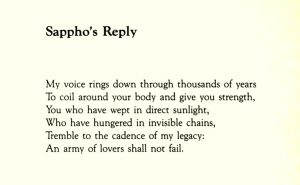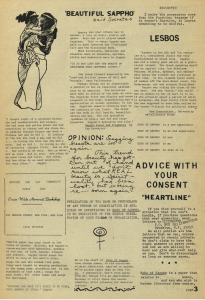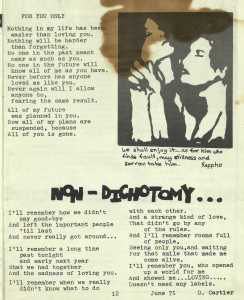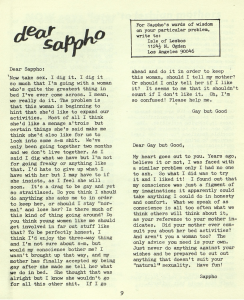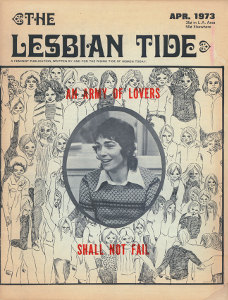“[Sappho] was central to her culture, and even in fragments has been as central a poet in Western culture as it has developed over twenty-five centuries,” begins Judy Grahn in her 1985 piece “Writing from a House of Women” (Grahn 257). In this essay, Grahn, a feminist activist and important figurehead in the poetry of the Second Wave, discusses Sappho’s life, work, and what it conveys to today’s readers about the eternal nature of female love.
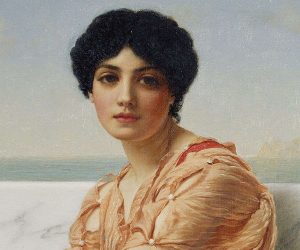
An imagined depiction of Sappho by English Neo-Classical painter John William Godward, 1904.
“In everything that remains of what [Sappho] did,” Grahn states, “she maintained a female-based point of view, a female collective center from which to speak of life and death, of beauty and love in general” (Grahn 257). This idea is where Grahn obtains the title for her essay, describing Sappho’s work as emerging from a literal “House of Women” and speaking for the whole of the female community surrounding her. Sappho would later be referred to as a whore for having so many female lovers and companions in her lifetime (Grahn 260). Yet in her time, she and her poetry were renowned and respected. She was referred to as the “tenth muse,” a title that placed her among the nine muses, the highest divine symbols of artistic creativity in ancient Greece. Much of her work was meant to be sung in accompaniment to music, often played on a lyre or other stringed instrument (Mendelsohn). Therefore, she created her art with performance in mind—an interesting point, as most Second Wave poets interacted with her poetry only on the page.
What is perhaps most compelling about Sappho is the influence her works continue to have on the queer people of today and of the Second Wave of Feminism, considering the fact that the majority of her poetry has been lost to time. Only around 650 lines of her poetry survive today from the original 10,000—a large portion of which Grahn suggests were “burnt and partially submerged” due to their “overtly Lesbian love lyrics” (Grahn 257). Yet, as I hope to illustrate in this curation of works, Sappho’s identity as a lesbian icon took on a life of its own, extending far beyond the poetry she left behind.
Works Cited:
Grahn, Judy. The Judy Grahn Reader. Edited by Lisa Maria Hogeland, Aunt Lute Books, 2009, pp. 257-260.
Mendelsohn, Daniel. “How Gay Was Sappho?” The New Yorker, 9 Mar. 2015, https://www.newyorker.com/magazine/2015/03/16/girl-interrupted.

